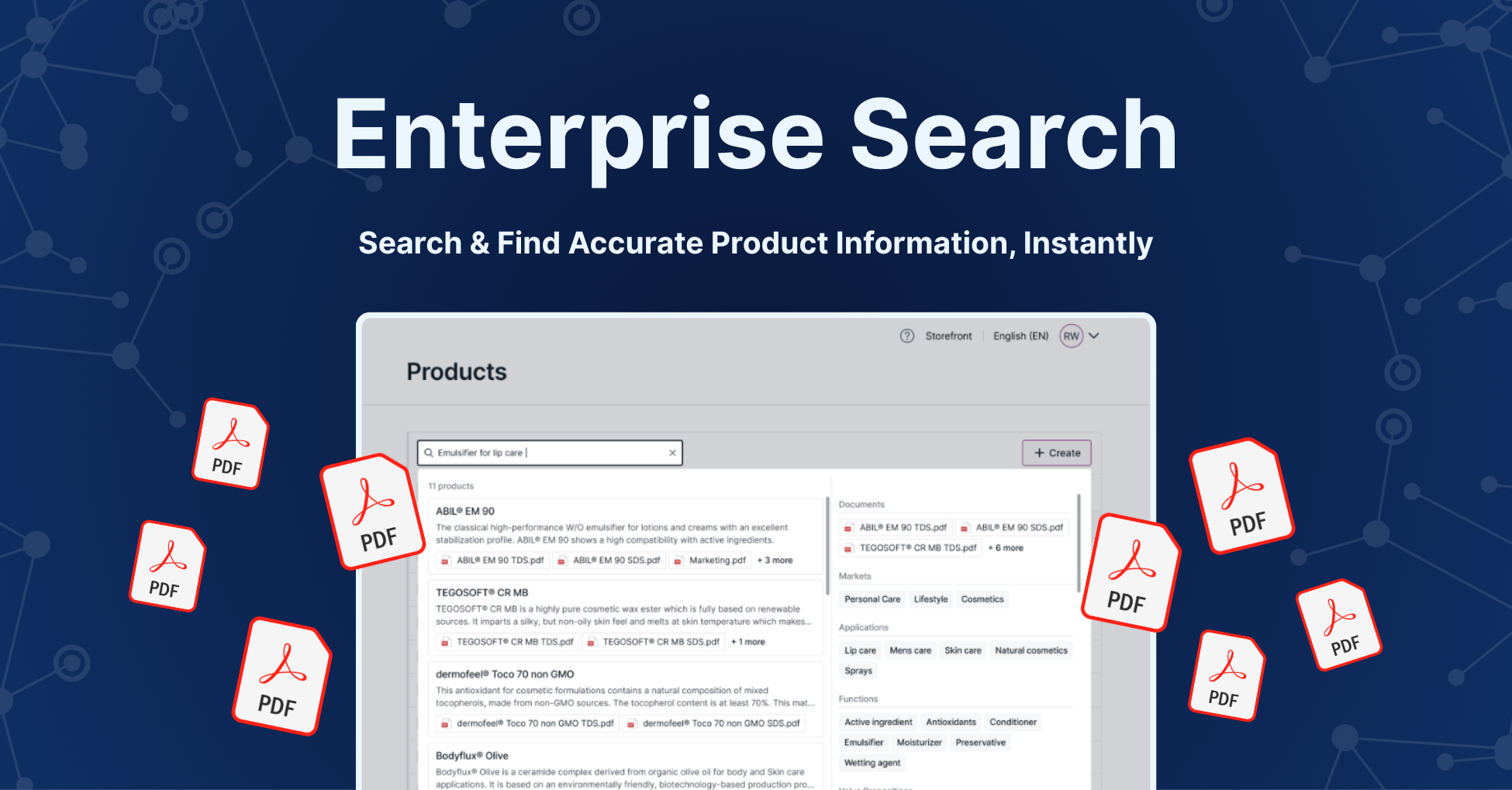

Chemical companies run on product knowledge, from TDS sheets and formulation specs to regulatory documents, application guides, supplier documentation, and more. This information powers every function: sales, marketing, operations, procurement, and compliance.
However, the information is often buried in static files, such as PDFs, Word documents, and spreadsheets, scattered across shared drives and folders. Today’s legacy systems were designed for storage and retrieval, rather than accessibility and searchability.
Traditional database searches are limited to structured fields, and document repositories typically only support searching by name. Critical knowledge, such as formulation details, specifications, and CAS numbers, remains locked inside unstructured content.
With AI, chemical companies have found a way to upload files into external tools, such as ChatGPT or ClaudeAI, to ask questions about their own data. These workarounds create silos, introduce security concerns, and disrupt established workflows.
Agilis Enterprise Search changes the game. Instead of uploading your files into a generic AI tool or separate project, we bring AI-powered search directly on top of your existing PIM and Digital Asset Management (DAM) system.
With your data digitized and structured in ionicPIM and supporting documents uploaded to its integrated DAM, it indexes both the metadata and the actual content within each file. This means you can search for specific terms, formulas, or codes numbers within the documents themselves.
This enables smooth collaboration for

No more searching through a dozen systems. No more uploading to generic tools like ChatGPT. Agilis brings a unified product search natively into your platform.
Enterprise Search funnels precise, search-driven answers to every stakeholder, reducing “platform-switching” and letting teams focus on results, not file hunts.
Ready to experience the new era of document search?
Contact your Agilis account manager and keep your knowledge workflow fast, full, and future-ready.
Agilis Enterprise Search is an AI-powered tool that allows chemical companies to search within their unstructured product documentation — such as PDFs, spreadsheets, and Word files — directly from their existing PIM (ionicPIM) and Digital Asset Management (DAM) system.
It indexes both metadata and file content, enabling fast, accurate, and secure access to technical, regulatory, and commercial documents across the organization.
Traditional search tools only scan file names and typically require high user dependence to ensure consistent file naming conventions across thousands of documents. Agilis Enterprise Search reads and understands the actual content inside documents — including specs, SDS information, test results, and formulations.
It uses semantic AI to interpret chemical terms and context, returning the most relevant answers, not just keyword matches.
All data is stored in your ionicPIM and its integrated DAM instance. Enterprise Search runs directly on top of this, indexing both:
No data is sent to third-party AI platforms. Everything stays within your environment, respecting your existing security and access controls.
It supports a wide range of file types, including:
All indexed documents become searchable by content, not just by title.
Key teams that benefit include:
Yes. Enterprise Search respects role-based permissions and provides:
No document leaves your environment — it’s fully embedded and governed by the same security model as your PIM and DAM.
Files are indexed in real time upon upload or update. There is no lag — newly added content becomes instantly searchable.
No. Agilis Enterprise Search is pre-trained for chemical terminology and file formats. It requires no manual configuration or AI training on your part.
If you're an existing Agilis customer using ionicPIM and DAM:
Alchemist AI is Agilis' suite of intelligent tools — Enterprise Search is one of its offerings. Alchemist powers contextual search, semantic understanding, and personalized results across the Agilis platform, including catalogs, portals, and internal workflows.